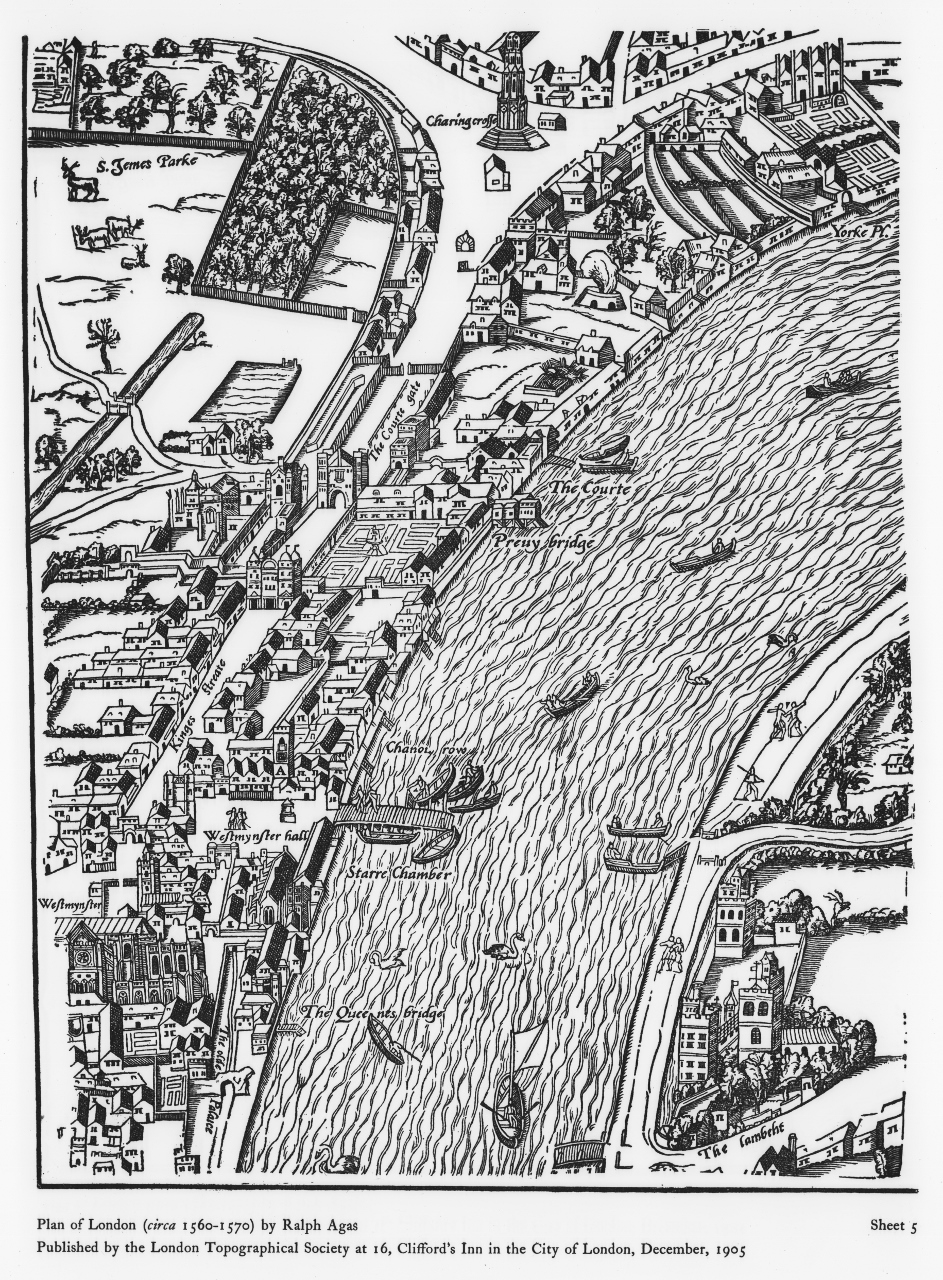The Lost Palace of Whitehall
Chapter 3 : “tis now the King's, and called Whitehall”
The residential side of Westminster Palace had burnt down in 1512 leaving Henry VIII without a London residence. As a frequent guest of the cardinal, Henry was aware of the magnificence of York Place and its convenient location. By 1526 the king had begun his affair with Anne and a year later he had decided to make her his new queen. Failing to secure a papal annulment of Henry’s marriage to Katherine of Aragon, Wolsey fell from favour. The cardinal was stripped of his assets and exiled while Henry gained a new London base – York Place.
In 1529 Henry and Anne arrived at the waterstairs of the townhouse to inspect the residence. Wolsey’s bachelor house was the perfect home for the two lovers. The lack of queen’s apartments meant that Katherine, whose marriage to Henry had not yet been annulled, was unable to stay there. It was for this reason that Anne was described as preferring “that palace for the King's residence to any other” and that construction began on making the cardinal’s house into a royal palace.
The couple spent Christmas making plans for the enlargement of the townhouse. Unlike Hampton Court, which Henry also seized from the Cardinal, York Place was limited in terms of room for expansion. The townhouse was surrounded by shops and houses and restricted by the Thames on the east and King Street on the west. Before construction could begin, Henry had to buy the adjoining land from their owners, a task that ended up costing him over a thousand pounds.
As King Street was a public thoroughfare that could not be removed, the palace was built on both sides of it. A royal sports centre was built on the west side of the street including a tiltyard, tennis courts and cockpit. The residential side of the palace was established to the east and it incorporated Wolsey’s great hall and chapel and new lodgings for the king and queen. Henry also reclaimed land from the Thames enlarging the palace east towards the river.
The two sides of the palace were connected by a gatehouse, known as the Holbein Gate. This allowed the king to cross over from one side of the palace to the other without going out into the public street. In January 1533 the gate served a more romantic purpose as one of its rooms became the setting of Henry and Anne’s clandestine marriage. In the early morning of the 25th the lovers said their vows in front of only a handful of witnesses. Secrecy was vital as Henry had not completed his divorce from his first wife and Anne was already pregnant.
A few months after this marriage, on 1 June 1533, Anne Boleyn was crowned at Westminster and Whitehall Palace was chosen as the location for the celebrations that followed. The festivities included balls, banquets and jousting in the newly built tiltyard of the palace. Rather anticlimactically, the jousts were a failure. There were “very few spears broken” as the horses refused to run, causing “great displeasure” to the contestants.
It is tempting to interpret the failed jousts as an omen, a premonition of Anne Boleyn’s downfall only three years later. Nonetheless, Anne must have been in a joyous mood that day. She had just been crowned queen and was celebrating in the palace that she had been influential in developing, in which she had been married, and in which she had debuted at court 11 years earlier.
By the time of Anne’s coronation the palace was far from complete but its transformation from York Place into Whitehall Palace was already being recognised. One of the earliest uses of the terms Whitehall appears in documents regarding Anne’s coronation. Anne was described arriving at “Whytt halle at Westmyster that some tyme was the bysshoppe of Yorkes place” before proceeding to Westminster. The makeover was made official in 1536 when, in an Act of Parliament, Henry made Whitehall his principal seat. Shakespeare commemorated the transition in his play Henry VIII: “You must no more call it York Place—that is past: For since the Cardinal fell that title's lost; 'Tis now the King's, and called Whitehall”.





